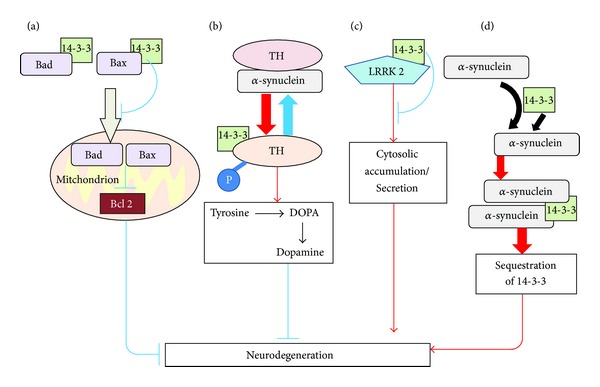Figure 1.

Overview of the molecular basis of the neuroprotective roles of 14-3-3 in Parkinson's disease. 14-3-3 proteins may play a protective role against neurodegeneration in PD by interacting with various proteins. (a) 14-3-3 interacts with Bad and Bax proteins and inhibits their translocation into mitochondria and their subsequent suppression of Bcl-2. These interactions prevent apoptosis of neurons. (b) 14-3-3 proteins interact with phosphorylated tyrosine hydroxylase (TH) to enhance its activity. In contrast, α-synuclein binds unphosphorylated TH to reduce its activity. These protein interactions contribute to the maintenance of optimal dopamine levels. Inadequate levels of dopamine lead to a neurodegeneration. (c) 14-3-3 interacts with LRRK2 protein that is related to PD pathogenesis. This interaction may inhibit cytosolic accumulation and secretion of LRRK2. (d) α-synuclein interacts with 14-3-3 proteins and forms aggregates, resulting in the sequestration of 14-3-3. This sequestration may contribute to the pathogenesis of PD.
